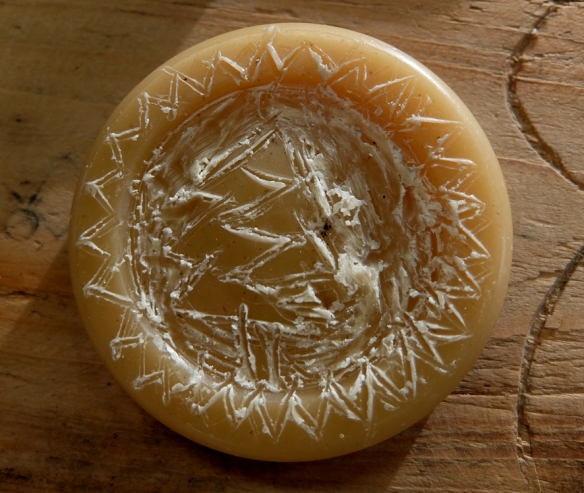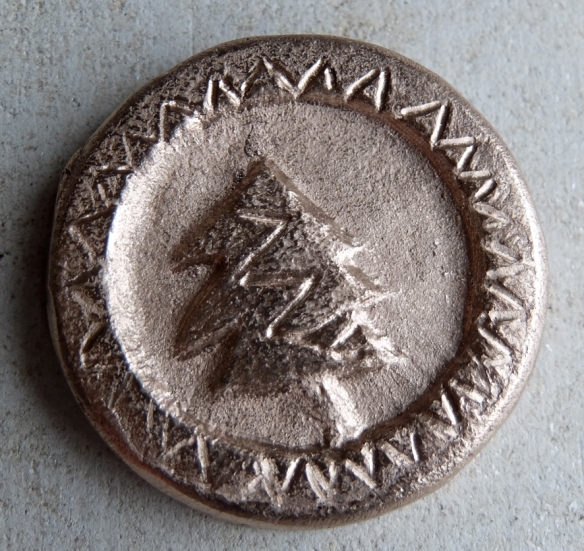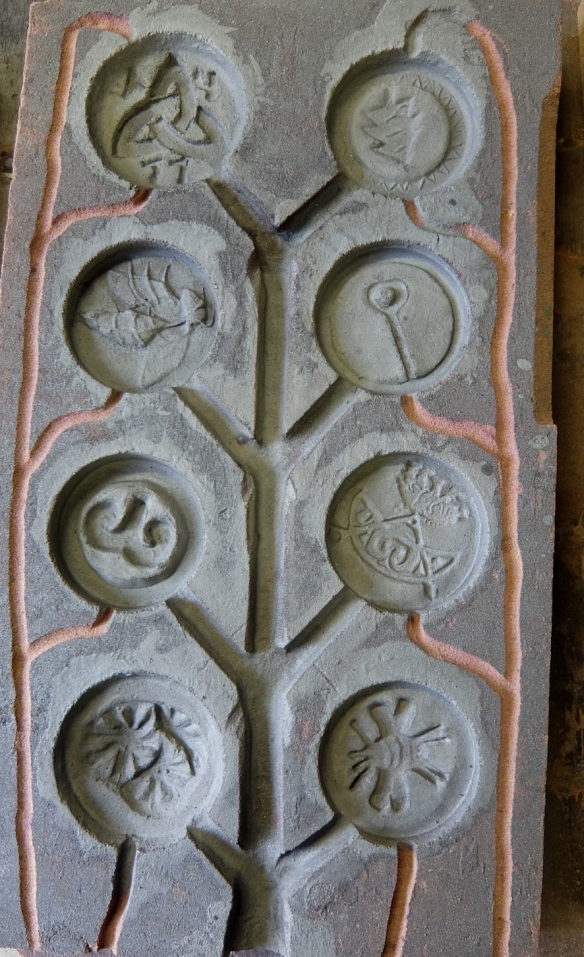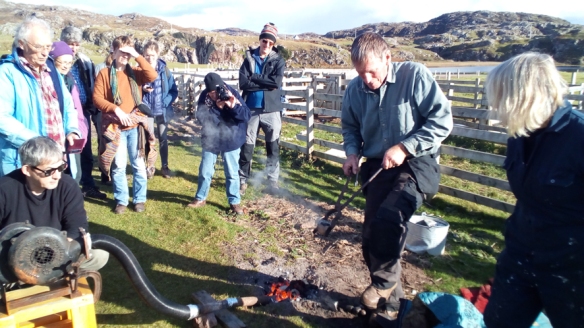
This goes back to May 2019 at the Sculpture Workshops. I would normally blog when the piece is finished, but things are on hold at present.
I discovered Italian block (thanks Eden) and made the beeswax model (above) for the main part of a commissioned piece remembering the heroes at Dunkirk and La Panne. The design is based on a torpedoed submarine in the Imperial War Museum in London.


I made a clay model and then took a beeswax cast from the clay. The top photo is the wax cast which has been sprued (adding runners for the metal, risers for escaping air and a funnel for pouring in the metal)
The italian block is made by making a flask of chicken wire around the wax, which is stood in pouring position in the flask.

This is draped in hessian soaked in plaster to form a plaster flask surrounding the wax,

The flask is then filled with the plaster mixture to create a solid block around the wax and dried.

The block mould is then heated slowly in a kiln overnight to melt out the wax and fire the plaster mix.

The mould is ready to be poured whilst still hot, so that it doesn’t fracture with the shock of the molten metal. This piece was poured at the end of May.
This traditional method can be used for bronze, silver and lower melt metals, but not for iron.
The Sculpture Workshop is reviewing its safety procedures and stopped all Italian block firing in summer 2019, pending the outcome of this review. Plans are in hand to remodel the metal workshops and I hope that when this happens I can explore Italian block further. I really like the method as offering great scope for design whilst being pretty sustainable and low tech.


 The process was much the same, but it needed to be made in two pieces because of the limit on the crucible size in the foundry. The mould was taken from the original wax and then a clever ruse with carpeting provided for the thickness of the metal. The photo shows taking the mould from the wax which has just been used for the iron lintel mould.
The process was much the same, but it needed to be made in two pieces because of the limit on the crucible size in the foundry. The mould was taken from the original wax and then a clever ruse with carpeting provided for the thickness of the metal. The photo shows taking the mould from the wax which has just been used for the iron lintel mould.




 Thanks to Scottish Sculpture Workshop tech team and George Beasley.
Thanks to Scottish Sculpture Workshop tech team and George Beasley.





 We got a tent erected near to the broch, in the lee of the stones from the rockfall in the broch that the restoration project removed in season one. It was surprisingly easy to heave the stone lintel into the tent on Day 1 and surprisingly uncomfortable working in and out the tent. A lot of climbing in and out bent double and kneeling on uneven rocks was involved over the week. Some days were sunny and some grey and cold, nearly all were windy, with the wind battering the tent onto you as you worked.
We got a tent erected near to the broch, in the lee of the stones from the rockfall in the broch that the restoration project removed in season one. It was surprisingly easy to heave the stone lintel into the tent on Day 1 and surprisingly uncomfortable working in and out the tent. A lot of climbing in and out bent double and kneeling on uneven rocks was involved over the week. Some days were sunny and some grey and cold, nearly all were windy, with the wind battering the tent onto you as you worked.
 When I removed the clay wall on each piece I oiled the surface and designed a wedge to ease the separation of the sections. After the third section there was a mishap with the scales and we swapped for a different set. This seemed to hugely improve the consistency of the plaster from there on; and the job speeded up because there was no need to wait for the pools on the groundsheet to go off. The number of sections meant that the work went on into Day 5.
When I removed the clay wall on each piece I oiled the surface and designed a wedge to ease the separation of the sections. After the third section there was a mishap with the scales and we swapped for a different set. This seemed to hugely improve the consistency of the plaster from there on; and the job speeded up because there was no need to wait for the pools on the groundsheet to go off. The number of sections meant that the work went on into Day 5.


 At a public event on Stoer field we smelted some more copper, which will be used in casting these waxes in bronze (thanks, Nigel, Fiona and Boyd)
At a public event on Stoer field we smelted some more copper, which will be used in casting these waxes in bronze (thanks, Nigel, Fiona and Boyd)
 By Wednesday all was ready to return to copper smelting trials. The smelt balls tend to over heat in the shaft furnace as it’s hard to see what is going on.
By Wednesday all was ready to return to copper smelting trials. The smelt balls tend to over heat in the shaft furnace as it’s hard to see what is going on.




 Once the wax models have been made and sprued they are then dipped in a slurry mix of clay (this time from Kingsbarns) sand (Cellardyke beach) and fibre (horse poo from near Kilrenny). There are two mixes, one is fine and the early coats are done in this and the other is coarser to build up the outer layers. Each layer has to dry before the next layer is added so it takes several days to build up the mould.
Once the wax models have been made and sprued they are then dipped in a slurry mix of clay (this time from Kingsbarns) sand (Cellardyke beach) and fibre (horse poo from near Kilrenny). There are two mixes, one is fine and the early coats are done in this and the other is coarser to build up the outer layers. Each layer has to dry before the next layer is added so it takes several days to build up the mould.




